Dae Yeol Lee
Space-Time Video Regularity and Visual Fidelity: Compression, Resolution and Frame Rate Adaptation
Mar 31, 2021
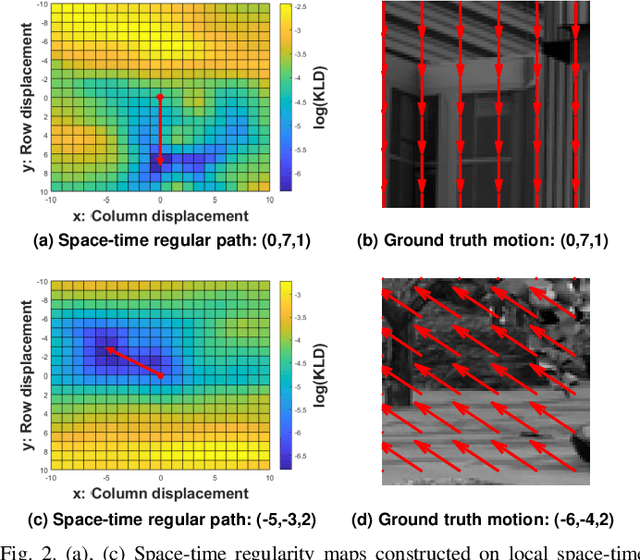
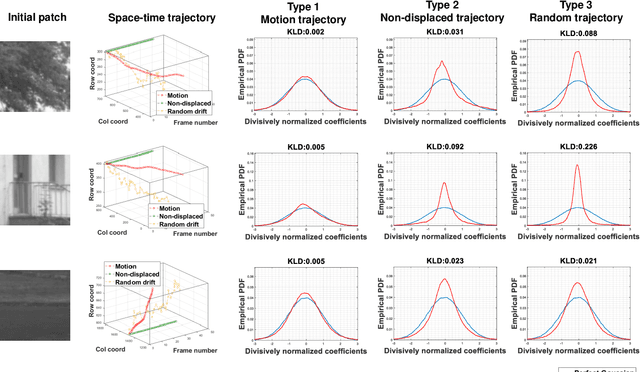

Abstract:In order to be able to deliver today's voluminous amount of video contents through limited bandwidth channels in a perceptually optimal way, it is important to consider perceptual trade-offs of compression and space-time downsampling protocols. In this direction, we have studied and developed new models of natural video statistics (NVS), which are useful because high-quality videos contain statistical regularities that are disturbed by distortions. Specifically, we model the statistics of divisively normalized difference between neighboring frames that are relatively displaced. In an extensive empirical study, we found that those paths of space-time displaced frame differences that provide maximal regularity against our NVS model generally align best with motion trajectories. Motivated by this, we build a new video quality prediction engine that extracts NVS features from displaced frame differences, and combines them in a learned regressor that can accurately predict perceptual quality. As a stringent test of the new model, we apply it to the difficult problem of predicting the quality of videos subjected not only to compression, but also to downsampling in space and/or time. We show that the new quality model achieves state-of-the-art (SOTA) prediction performance compared on the new ETRI-LIVE Space-Time Subsampled Video Quality (STSVQ) database, which is dedicated to this problem. Downsampling protocols are of high interest to the streaming video industry, given rapid increases in frame resolutions and frame rates.
A Subjective and Objective Study of Space-Time Subsampled Video Quality
Jan 29, 2021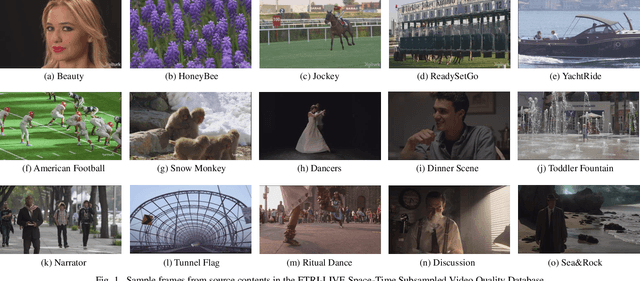
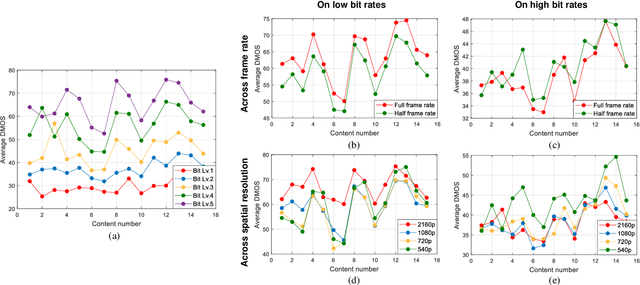

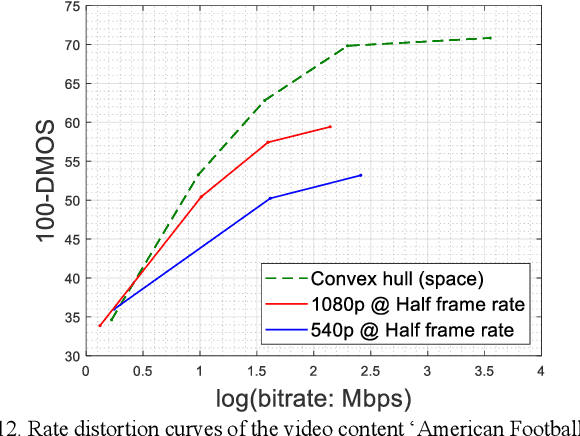
Abstract:Video dimensions are continuously increasing to provide more realistic and immersive experiences to global streaming and social media viewers. However, increments in video parameters such as spatial resolution and frame rate are inevitably associated with larger data volumes. Transmitting increasingly voluminous videos through limited bandwidth networks in a perceptually optimal way is a current challenge affecting billions of viewers. One recent practice adopted by video service providers is space-time resolution adaptation in conjunction with video compression. Consequently, it is important to understand how different levels of space-time subsampling and compression affect the perceptual quality of videos. Towards making progress in this direction, we constructed a large new resource, called the ETRI-LIVE Space-Time Subsampled Video Quality (ETRI-LIVE STSVQ) database, containing 437 videos generated by applying various levels of combined space-time subsampling and video compression on 15 diverse video contents. We also conducted a large-scale human study on the new dataset, collecting about 15,000 subjective judgments of video quality. We provide a rate-distortion analysis of the collected subjective scores, enabling us to investigate the perceptual impact of space-time subsampling at different bit rates. We also evaluated and compared the performance of leading video quality models on the new database.
On the Space-Time Statistics of Motion Pictures
Jan 29, 2021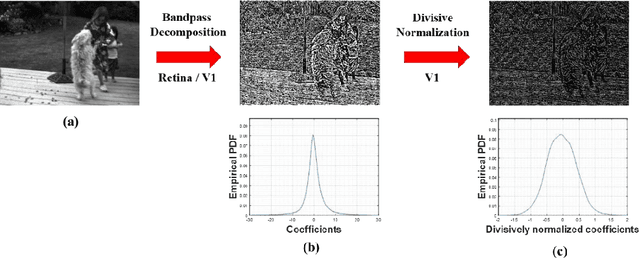
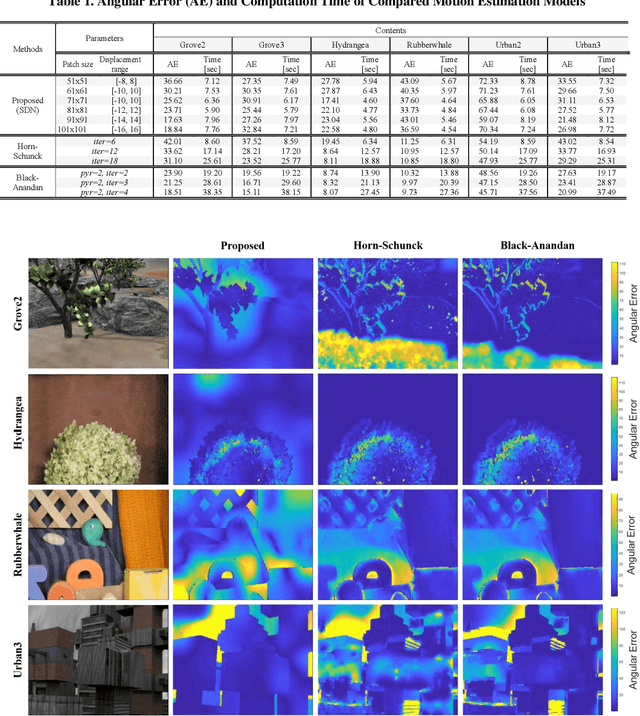
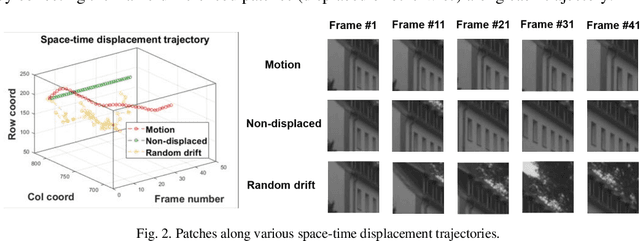
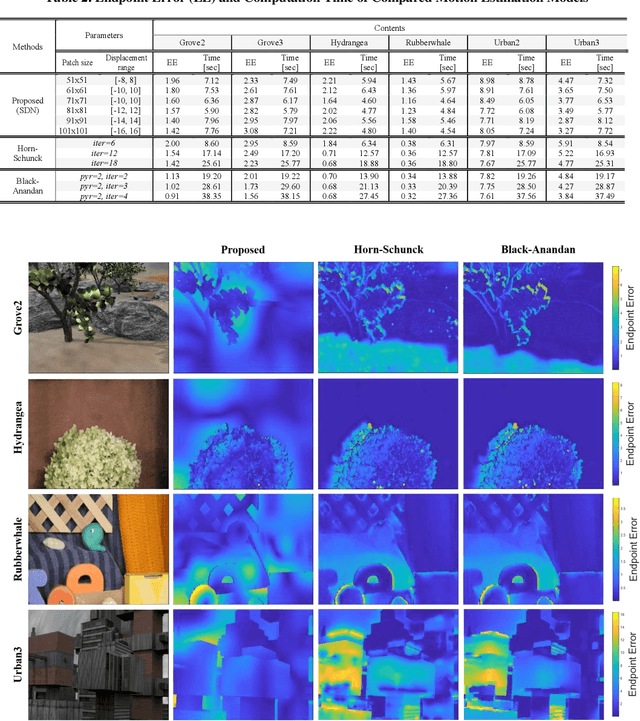
Abstract:It is well-known that natural images possess statistical regularities that can be captured by bandpass decomposition and divisive normalization processes that approximate early neural processing in the human visual system. We expand on these studies and present new findings on the properties of space-time natural statistics that are inherent in motion pictures. Our model relies on the concept of temporal bandpass (e.g. lag) filtering in LGN and area V1, which is similar to smoothed frame differencing of video frames. Specifically, we model the statistics of the differences between adjacent or neighboring video frames that have been slightly spatially displaced relative to one another. We find that when these space-time differences are further subjected to locally pooled divisive normalization, statistical regularities (or lack thereof) arise that depend on the local motion trajectory. We find that bandpass and divisively normalized frame-differences that are displaced along the motion direction exhibit stronger statistical regularities than for other displacements. Conversely, the direction-dependent regularities of displaced frame differences can be used to estimate the image motion (optical flow) by finding the space-time displacement paths that best preserve statistical regularity.
 Add to Chrome
Add to Chrome Add to Firefox
Add to Firefox Add to Edge
Add to Edge